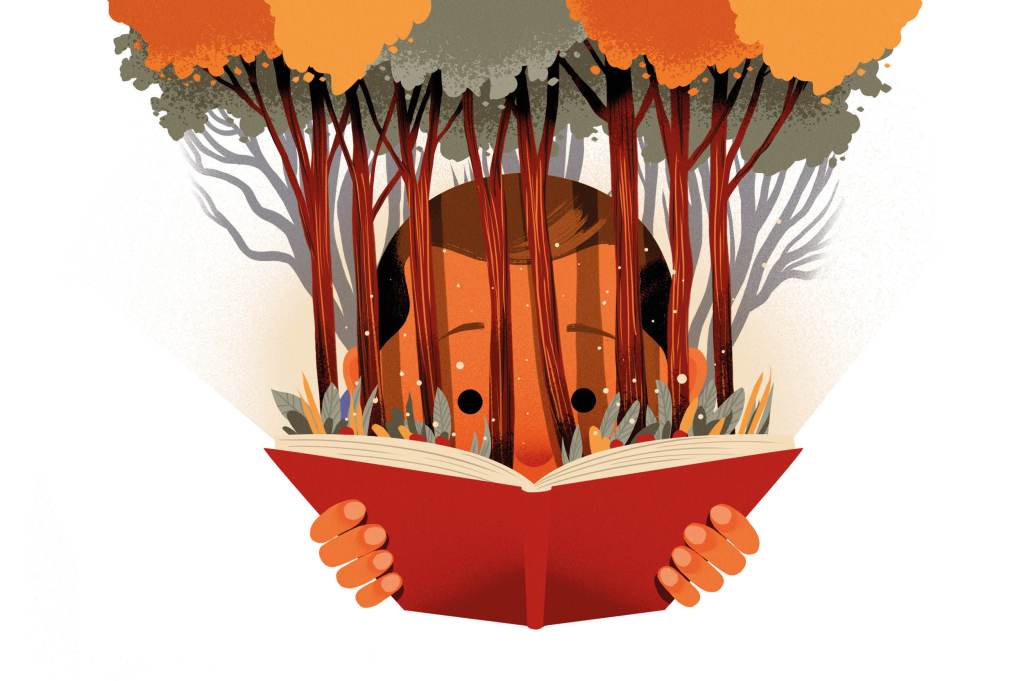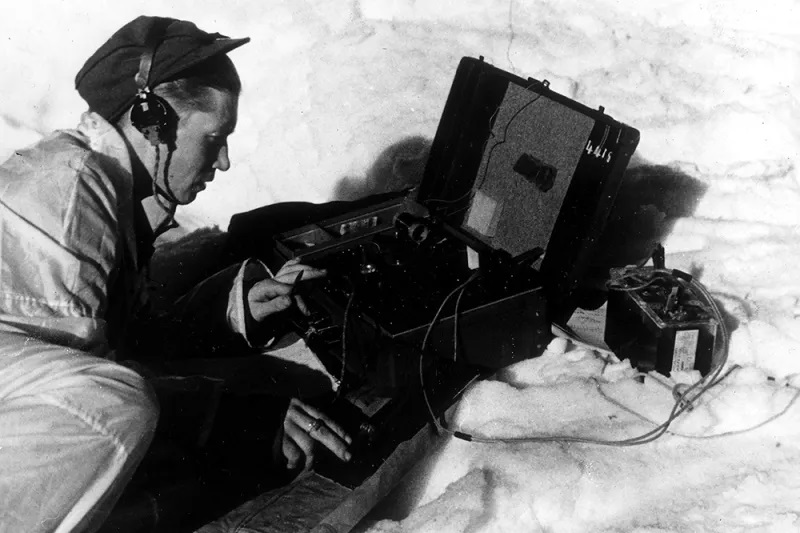My first reaction, on tipping this vast compendium — soaring toward 600 pages — out of its padded bag onto the kitchen table, was straightforward envy at the thought of anyone being paid what, you infer, was quite a reasonable sum of money to spend several years on the intoxicating trail of the children’s book. My second was intense curiosity over the procedural approach employed, which is to say that there are a variety of well-worn pathways into the heart of the genre; it would be fascinating to see which ones Leith, the literary editor of The Spectator in the UK, had chosen to follow.
The first path, exemplified by Francis Spufford’s 2002 The Child that Books Built, involves writing a memoir that broadens out into a consideration of the form as a whole. Path number two — like Humphrey Carpenter’s 1985 Secret Gardens: A Study of the Golden Age of Children’s Literature — inclines to the historical survey. Path number three, pioneered by George Orwell’s famous essay “Boys’ Weeklies” of 1940, and moving into terrain further mapped out by Richard Hoggart’s 1957 The Uses of Literacy, takes in the much wider question of what might be called literary sociology.
And so Orwell, negotiating his way through the immensely stylized world of Frank Richards’s Billy Bunter stories, was keen to establish not only what they were about, but to identify the readers they were aimed at and the messages they burned to impart. What did Billy Bunter’s fans want from his adventures at Greyfriars boarding school, and what, to extrapolate, did the owners of the magazines in which they appeared want them to want, and what was the degree of reciprocity between reader, writer and sponsor? To complain, as less switched-on critics occasionally do, that a children’s book is too frail a vessel to bear this weight of explication is to miss the point. One of The Haunted Wood’s great strengths is Leith’s awareness of just how important children’s literature is, that the moral and political lessons it inculcates, or confirms — or in some cases dispels — are all the more vital for being preached in childhood.
By and large Leith opts for the historical survey, with occasional forays elsewhere and a handful of highly arresting moments when all three pathways are brought together into a single associative highway. But perhaps we ought to go back to first principles and ask: What exactly is a children’s book? Who is it aimed at and what it is trying to do? Leith, while determined to stick up for his chosen subject — Martin Amis is told off for declaring that he might write a children’s book if recovering from a serious brain injury — points out that the genre is of comparatively recent origin, possibly dating from the late nineteenth century, and warns that practically all bets about the nature of the audience and that audience’s motives are off.
These deductions are confirmed by statistical and anecdotal evidence. Leith notes, for example, that the average reader of today’s “Young Adult” novel is likely to be a woman in her early thirties. Anthony Powell left a fascinating paragraph or two on his echt-Victorian parents’ fondness for the work of A.A. Milne — a consequence, Powell speculated, of their both having had unhappy childhoods: to Powell himself, Christopher Robin’s adventures in the Hundred Acre Wood were the purest anodyne. Orwell used to beguile his leisure with back-numbers of an uplifting publication for teenage womenfolk called the Girls’ Own Paper, whose letters page agonized over such dilemmas as whether it was ladylike to ride a bicycle.
Leith himself proceeds from Aesop and Anonymous by way of Blake and Wordsworth to a finale that takes in such stars of the modern firmament as J.K. Rowling and Philip Pullman, with plenty of space reserved for scholars who have written about the fundamentals of children’s literature (Vladimir Propp) or the historical contexts of childhood (Lawrence Stone). If there is an inevitable Anglophone bias, then Leith is always alert to transatlantic developments, and I was horrified to discover not only that the Nancy Drew mysteries were written by a team of hacks, but that Mildred Wirt Benson, a journalist from Toledo, Ohio, who was responsible for all but seven of the original series of thirty, was paid a flat fee of between $125 and $250 per book.
What follows is, naturally, a series of judgments, but it is also, and perhaps more crucially, the reconnoitering of a series of environments. Leith is particularly acute on the spaces children’s books inhabit, whether they happen to be portals between real and imagined worlds or the boarding schools in which so much pre-war British children’s literature and least a little American (Susan Coolidge’s What Katy Did at School, for instance) takes place. As he remarks of the boarding school, “Nothing too bad could happen there, but plenty could happen.” When it comes to judgment, he has a welcome knack of viewing books not in terms of what the adult reader expects, but what the child wants. What he calls the “Old Testament morality” of the Roald Dahl books may have grown-up readers holding their noses; children, on the other hand, want the good to succeed and the bad not only to fail but to do so as ingloriously as possible.
There is also some eye-catching reportage from the professional coalface. Take, for example, the almost fathomless rivalry that seems to have existed between Enid Blyton — possibly the most successful British children’s writer of the whole post-war era — and her near-neighbor Alison Uttley, author of the Beatrix Potter-derived Little Grey Rabbit books and, it would be generally agreed, a much superior stylist. When well-meaning friends brought the two women together, Uttley is supposed to have opened the batting by pretending not to know who Blyton was, remarking only “I know the book you wrote about a horse, but what else have you written?” After Blyton retorted that “Smith’s window is full of my books. You can see a few titles if you care to look,” Uttley (disingenuously) assured another guest, “I had mixed her up with Enid Bagnold and National Velvet.”
“Popular fiction tends to vanish from the record, but it shapes and reflects the culture,” Leith observes in reference to the Imperialist boys’ writer G.A. Henty. If The Haunted Wood has a very slight weakness, it is Leith’s habit of pulling gems out of the mud rather than acknowledging that the mud is interesting in its own right. With a few tantalizing exceptions — Talbot Baines Reed’s The Fifth Form at St. Dominic’s, Kipling’s Stalky & Co. — the millions of copies of boys’ school stories published in the UK between 1870 and 1950 have sunk without trace, but they had a profound influence on successive generations of male adolescents — my father was one — most of whom had never seen the inside of a public school in their lives, but drank in the atmospherics and the One Nation Conservatism that tended to lie at their core.
The same is true of what a modern age would call “influencers.” Leith offers a respectful account of Kaye Webb, who ran Penguin Books’s Puffin imprint, but stays quiet about the well-nigh seismic impact of Puffins on childhood culture. Basically, if you were a middle-class British child in the 1970s, Puffins (C.S. Lewis, Roald Dahl, Tove Jansson’s Moomin books, Laura Ingalls Wilder’s Little House series from the US) were what you read, and the bourgeois veneer of the Puffin Club (the book club founded by Webb) and its newsletters was every so often chipped away by a strain of working-class children’s writing — Eve Garnett’s 1937 The Family from One End Street, say, or Elizabeth Stucley’s 1960 Magnolia Buildings — that, by and large, Leith doesn’t address.
On the other hand, shipping all this material in would undoubtedly have extended the book beyond manageable length. Leith ends by warning us that the statistics show children’s reading to be in decline, but hoping that the warm blanket of techno-crud now descending on every preteen head can be kept at bay. Meanwhile, there is a way in which children’s books seem to be stealthily infiltrating adult literature. Both Mary Gaitskill’s 2015 The Mare and Kazuo Ishiguro’s 2021 Klara and the Sun, as their authors candidly admitted, began life as YA novels, and the same kind of genre-blending has been attributed to Donna Tartt.
The Haunted Wood is a terrific book, full of high-grade lit-crit and undimmed personal enthusiasm — I loved Leith’s story of being summoned upstairs by a child’s scream, only to find his eight-year-old daughter reading “that bit” in Charlotte’s Web — but with the ghost of a second book lurking behind it. This one would be about audience, sensibility, propaganda and the intricate relationship that exists between them. I hope Sam Leith has the urge — and the time — to write it.
This article was originally published in The Spectator’s September 2024 World edition.


























Leave a Reply